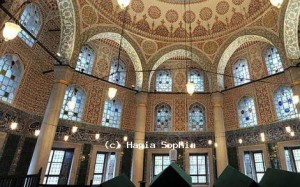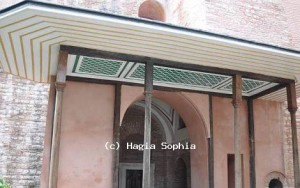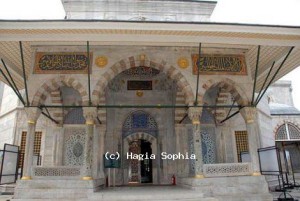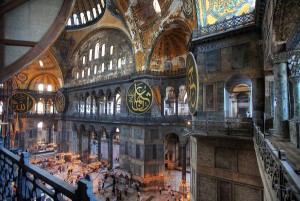Shahada is the Islamic creed declaring the oneness of God and the acceptance of Muhammad as God’s prophet. In order for one to become muslim, they must recite the Shahada with a sincere heart. In English it translates to “I bear witness that there is no God but Allah, and the Muhammad is the messenger of Allah”. One declaring this pronounces publicly their confession of faith. It is also important to note that the Shahada is the first and most important of the five pillars of Islam, because understanding the Shahada means that one understands and accepts fully the essence of the entire faith, which is very important to muslims. The Muslims are very outward with their faith and the Shahada displays perfectly their need to proclaim the faith to others by reciting it.
The Shahada relates to the Hagia Sophia because it was first made as a Christian church and then later hanged into a Mosque for the Islamic people. The Hagia Sophia stands 180 ft high and 100 ft. wide, it had been standing for 1500 years and has survived many earthquakes because of its intricate architectural structuring. To build it, it tok 100 contractors and nearly 1000 workers. After 20 years the famous dome collapsed and Justinian had it rebuild. The dome that is present today is the same dome that was rebuilt.
The Shahada and the Hagia Sohpia are similar in the fact that they are both very treasured by the Islamic people. These are both centerpieces for their religion and faith which makes the two directly correlated to each other.
https://en.wikipedia.org/wiki/Shahada
berkleycenter.georgetown.edu



